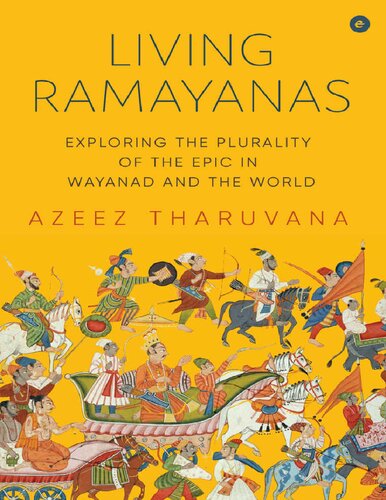

Most ebook files are in PDF format, so you can easily read them using various software such as Foxit Reader or directly on the Google Chrome browser.
Some ebook files are released by publishers in other formats such as .awz, .mobi, .epub, .fb2, etc. You may need to install specific software to read these formats on mobile/PC, such as Calibre.
Please read the tutorial at this link: https://ebookbell.com/faq
We offer FREE conversion to the popular formats you request; however, this may take some time. Therefore, right after payment, please email us, and we will try to provide the service as quickly as possible.
For some exceptional file formats or broken links (if any), please refrain from opening any disputes. Instead, email us first, and we will try to assist within a maximum of 6 hours.
EbookBell Team

5.0
28 reviewsThere is no single Ramayana, just as there is not just one kind of people. The epic that Valmiki first wrote has changed across space and time to reflect the cultural consciousness of a diverse cross-section of humanity. These widely different social contexts—in India, in Southeast Asia and the world at large, and in different faiths and castes and tribes—have produced an immense variety of Ramayanas in the oral, textual and visual mediums.
Azeez Tharuvana was powerfully drawn to the oral tribal Ramayana tradition in Wayanad, Kerala. He tells us that the locals believe Wayanad to be the site of all the action that took place in the Ramayana. So, in their version, the hermitage at Ashramkolly near Pulpally is Valmiki’s ashram, and Jadayattakavu is the place where Rama held Sita by the hair to keep her from falling into the earth. Tharuvana’s research into this tradition led to a deeper immersion in the many forms and shapes that the epic poem has taken. It illustrates how human societies reshape narratives as a way of expressing and asserting their unique identities and their moral and social codes.
In this light, the Ramayana is not only a religious text, but the very symbol of plurality, replete with interesting divergences. It is an ever-changing work that will never be a thing of the past. The many profound, often entertaining, versions of the epic discussed in this sharp, illuminating work bear testimony to the fact that the Ramayana must not be talked about as a mythological text of yore but as something that is alive, polyphonic and pluralistic. Through the story of Rama, Azeez Tharuvana’s Living Ramayanas shines a light on a text inclusive like no other.